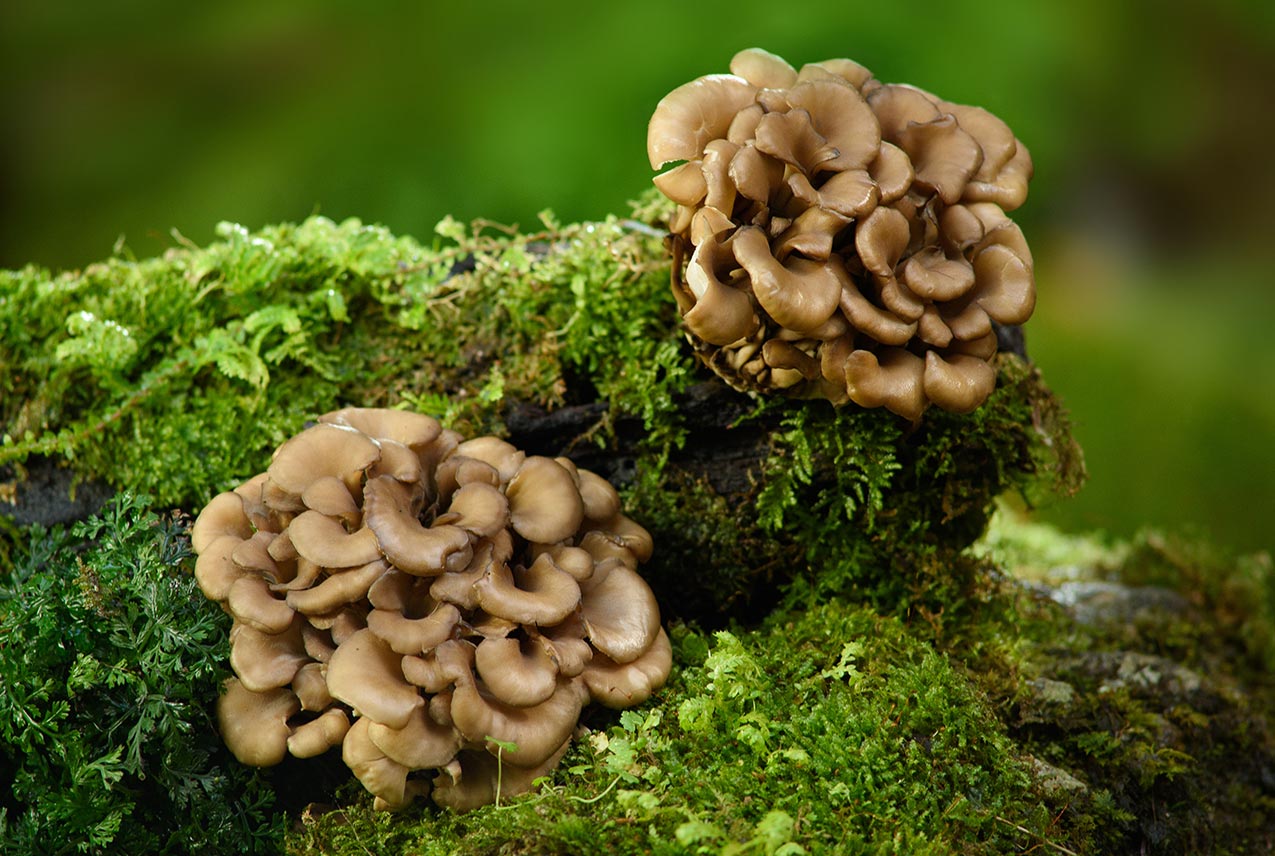Everyday Immune Mushrooms & Herbs
Traditionally for sustaining overall wellness*
Grifola frondosa
Maitake (Grifola frondosa) is commonly known as Hen of the Woods or the Dancing Mushroom. It was highly valued in Japanese and Chinese traditional medicine for the support of the immune system.* During Japan’s feudal era, Maitake was used as currency; the daimyo, or provincial nobles, would exchange Maitake for its weight in silver from the shogun, the military ruler of Japan. This is a perennial fungus that grows in the same place year after year, if undisturbed. It is prolific in the northeastern deciduous forests of North America and Japan. As an edible mushroom, it has an interesting texture and earthy flavor. Fresh and dried Maitake mushrooms are now readily available in larger supermarkets. A mushroom goes through many stages during its life cycle, just like any plant or animal. Each part of a mushroom has unique attributes that support wellness and serve a different purpose for the organism, but it’s the fruiting bodies that receive the most attention and are the most familiar. Fruiting bodies emerge from the substrate on which they grow — such as trees or fallen logs — to become the part of the mushroom we recognize. They’re the above-ground part that we can see when we walk through the woods, and they’re also what have been traditionally foraged and consumed, in food and supplements.

